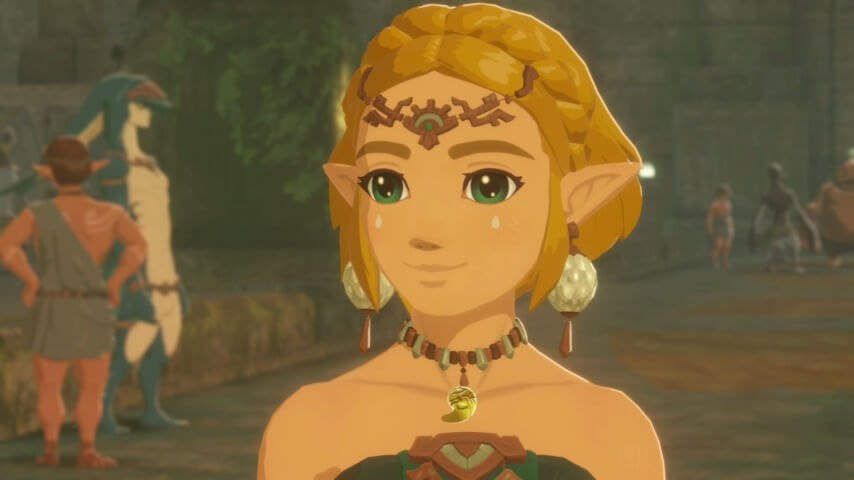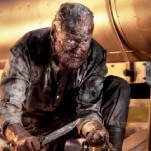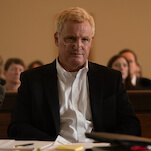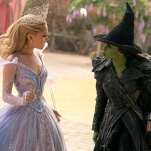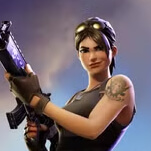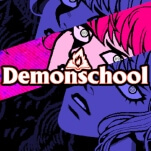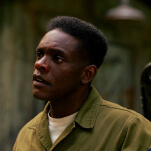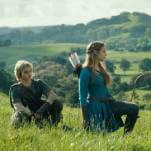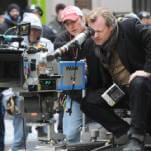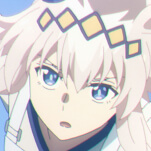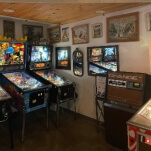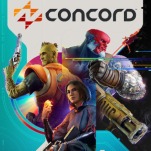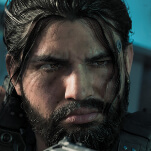Moments like this serve to strengthen Zelda as both an individual and as a series mascot. Historically, her belief in prophecy is the axis upon which most games in the series pivot. She’s a devout religious character in most games, especially Breath and Tears. Her learned knowledge of Hyrule’s past and belief in that knowledge is what often empowers Link to accomplish his tasks. This strengthens the player’s connection to Zelda as a character, as her convictions steer them into unknown and perilous territories. This interplay between Tears and Imprisonment, then, makes that explicit in-text. It’s a moment that elucidates something that has always been Zelda’s true purpose: to discover, to believe, and to put that belief into action by any means necessary.
A Princess’ Place
The princess’ role in Imprisonment is akin to that of her ancestor (?) in Echoes Of Wisdom. In that game, Zelda acts as a clandestine ambassador to each kingdom in Link’s absence. Armed with the ability to summon any learned object or living being out of thin air, she unifies Hyrule and frees it from the clutches of a miasma void which has overrun her kingdom. In doing this, the player is given an intimate view of what Zelda’s relationship is to races such as the Gerudo, which gives keen insight into the extent of the Hylian Family’s rule.
Compare this to Age Of Imprisonment, in which Zelda’s chief responsibility is unifying with ambassadors from each kingdom in order to drive out occupying forces and liberate the in-game map. Both Echoes and Imprisonment position Zelda as equal parts emissary and strategist, a problem-solver whose main function is to unite people. In that sense, Link acts as her proxy in other Zelda games—bringing the player to new regions to assist in unification efforts by appeasing their individual needs.
Here, that’s left the princess with nagging insecurities leftover from previous installments. Zelda is at her most capable in Age Of Imprisonment, but also at her most self-doubting. Her protected upbringing has left the princess dubious of her ability to survive and thrive in combat. In one Tears Zelda Note, she reveals her inability to shoot an arrow without wreaking havoc. “When he was not occupied by his duties as my protector, Link would often come here to train alongside the regular soldiers,” she recalls. “Hm… They once let me join in, but the arrow I loosed went… off target. It also caught the flame of a torch, and everyone frantically raced to put out the resulting fire…”
In this game, archery is one of Zelda’s strongest suits. Wielded in tandem with her Zonai powers, she’s able to harness her latent power and draw it out through the bow itself. She fires bolts of energy off by the dozen—energy extracted and dissipated across the battlefield in a blinding hail of ethereal arrows. Alongside hardened Gerudo soldiers and bulky Goron troops, she cuts through Ganondorf’s forces like a trained soldier.
Imprisonment seems to show that all Zelda really needs is a group of characters who believe in the princess throughout her mistakes. In this game, she is not put on a pedestal—Rauru’s resistance needs all hands on deck, regardless of upbringing and status. The princess is forced to find her strength in combat by necessity. She wields her weapons with alarming proficiency not through rigid, archaic training, but by honing her latent power to push these tools to their absolute limit in a time of need.
Zelda succeeds on the battlefield not simply by training harder or being bigger than anyone else. Instead, she places faith in the power of Zonai weaponry and the Goddess herself. If Skyward Sword is to be believed, Goddess Hylia is also a previous incarnation of Zelda, which adds another layer of depth to the recurrent cycle. In a sense, the princess prays to her past self to find strength in the present, and through this is able to save Hyrule’s future.
Misrepresented Royalty
The truth is, Zelda has always been capable, even if she hasn’t been playable. From the very first game, the princess dictates terms of engagement for the player. The game’s background makes it clear Zelda traveled to each dungeon of the game and hid fragments of an ancient tablet before she’s imprisoned by Ganon. Even then, she instructs royal handmaiden Impa to seek out a single person with the courage to solve her trials and free her from Ganon. Even at her sparsest characterization, Zelda is the further thing from a damsel in distress. She’s a lady in waiting—in prayer that Hyrule’s cycle holds true and her personal savior arrives.
Critiques of Princess Zelda being “princess’d”—a questionable repurposing of “damseled” I’ve seen in relation to the character—read as reductive and sexist character assassination. A recent Polygon piece which uses the term suggests the strength of Zelda in Age Of Imprisonment is being a “badass” and not being limited to “fancy archery”:
[…] For once, she’s more than capable of doing it herself. It’s evident even in her fighting style that Nintendo took Zelda more seriously this time. In Age of Calamity, she’s kind of a nerdy joke, using iPad magic to throw bombs or do some other combination of gimmicks. In Age of Imprisonment, she’s a badass whose martial prowess rivals Rauru’s and isn’t just limited to fancy archery and esoteric powers of light like in some mainline Zelda games.
This avenue of critique is bad faith, at least in my view. It presumes no narrative power nor agency, instead placing an egoistic degree of importance on player-character actions. That’s to say nothing of how it downplays the importance of Zelda’s religion and the strength she draws from that. There’s also a very masculine understanding of “power” at work here—“power” as the player’s ability to end a life, to kill with expedience. Further, it undermines two decades of Zelda being the driving narrative raison d’etre, chief strategist, and titular historian of the franchise.
These narratives place a specific importance on how Zelda is treated by men. I would wager part of the reason the games have the gender-split fanbase they do is because of Zelda’s frustration at not being believed and being targeted for her body. The games don’t put her in harm’s way uncritically, without characterization or development. If anything, it presents the players a tragedy in each narrative—the recurrent story of a girl who must enlist a boy to protect her body from men. This goes back to Zelda II, in which the very first Princess Zelda is struck into a coma by her malignant brother.
Zelda’s lot is generational—extant across divergent timelines and thousands of in-game years. In Ocarina Of Time, Zelda’s concerns are undermined by her father as Gerudo war lord Ganondorf is welcomed into her kingdom and brings about its destruction. Her power is dormant in Wind Waker, because the threat that this era’s Ganondorf will chase and likely enslave or kill her is too great. In Spirit Tracks, Zelda’s body is stolen from her, as she’s forced to accompany Link and possess suits of armor to get it back.
It’s worth noting, also, that Zelda does not spend most of her time faffing about as a captive, especially after A Link To The Past. In both Ocarina Of Time and Wind Waker, she’s an active participant in the adventure. Ocarina, particularly, has her don the gender-bent identity of Sheik to guide Link. And beating Ganondorf without her on Epona, side-by-side with Link, would be impossible in Twilight Princess. In all three of these games, Zelda is always one step ahead of the player in terms of what she knows. They are only ever as empowered or informed as Zelda needs them to be at any given point—they’re just given the physical opportunity to realize that over a long period of time.
To me, Zelda is far too often conflated with Princess Peach, a character I’d agree has been tokenized a fair degree. (And even when she does get her own games, can’t seem to escape discourse.) But it is difficult for me to square misguided criticisms of Zelda as a “sexist” character with the actual narrative substance of the franchise. It’s also an easy one to disprove if one does away with the flawed premise that “playability equals empowerment.” Because Zelda in text is often the sole determinant of whether or not a game’s plot even happens. A player who reduces Zelda to a trophy to be won—and believes, with conviction, this is how Aonuma et al. want us to conceptualize the character—says more about that person than anything else.
Zelda, Empowered?
At its heart, the Zelda franchise is a story of consequences tied to not believing women. It is an implicitly feminist narrative told through a neutral male lens. Zelda is doomed to know more about Hyrule and its people than anyone, but that knowledge is consistently stymied by misogyny, whether it be her father’s or Ganondorf’s. Either Zelda is not taken seriously, or her very life is put at risk due to one man’s unyielding ambition. The player, then, must act as her stand-in—somebody that will have faith in her enough to do the things her role doesn’t allow. That in and of itself is salient commentary on gender politics.
It is disingenuous, however, to view Hyrule Warriors: Age Of Imprisonment as a correction of sexist “mistakes” simply because Zelda has mastered a Zonai weapon and can end lives by the dozen. To frame her empowerment like this degrades and simplifies a complex character whose knowledge lies at the root of the series. The story of Zelda being undermined, subverting the system, and restoring order is timeless—recurrent and relevant, no matter when or how it’s being told. As long as men do evil, as long as women are silenced, Zelda’s legend will always hold meaning and have power.
Age Of Imprisonment, though, finally gives the princess a chance to find out something about herself outside of this set cycle. Zelda is granted self-awareness—the opportunity to discover the strength and worth of her character alongside a cast that finally appreciates her, and doesn’t conscript her to the role ordained by a benevolent or malicious patriarch. Self-reflection and bodily autonomy granted, she becomes fully realized—a player-avatar with the knowledge and courage to wield absolute power. For the first time, Zelda can see herself as she has been for almost 40 years: brave, wise, and—yes—powerful.
